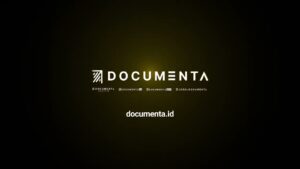Mining Permits: The Steep Road to Sustainability or Maximum Profit?
The mining industry is a cornerstone of global economic development, providing essential materials for construction, energy production, and technology. However, obtaining mining permits often represents a significant hurdle, balancing the demands of sustainability with the pursuit of profitability. This article examines the complexities of mining permits, the challenges involved, and how businesses can navigate this steep road responsibly.
Understanding Mining Permits
A mining permit is a legal authorization granted by governments to companies or individuals, allowing them to extract mineral resources. These permits are designed to regulate mining activities, ensuring environmental protection, social responsibility, and economic contributions.
Types of Mining Permits
- Exploration Permits: Allow preliminary assessments of mineral deposits.
- Extraction Permits: Grant rights for the full-scale mining of resources.
- Environmental Permits: Focus on mitigating the environmental impact of mining activities.
- Land Use Permits: Ensure compliance with zoning and land-use regulations.
Why Are Mining Permits Necessary?
Mining permits serve multiple purposes, including:
- Protecting ecosystems and biodiversity.
- Ensuring fair compensation for local communities.
- Preventing illegal mining and resource exploitation.
- Aligning with international sustainability standards.
Challenges in Obtaining Mining Permits
1. Regulatory Complexity
Mining permits often involve multiple levels of government and regulatory bodies. In countries like Indonesia, companies must navigate overlapping regulations from national, regional, and local authorities, which can create delays and confusion.
2. Environmental Scrutiny
Mining projects face rigorous environmental assessments to minimize their ecological footprint. Requirements include:
- Environmental Impact Assessments (EIA).
- Plans for land rehabilitation and post-mining restoration.
- Strategies for water and waste management.
These assessments can be time-consuming and costly, but they are essential for securing permits and maintaining public trust.
3. Community Relations
Local communities often oppose mining projects due to concerns about displacement, health risks, and environmental degradation. Companies must engage in transparent communication and offer tangible benefits to affected communities to gain their support.
4. Corruption and Bureaucracy
In some regions, corruption and bureaucratic inefficiencies hinder the permit process. Businesses may encounter demands for informal fees or face prolonged delays due to administrative bottlenecks.
Strategies for Navigating Mining Permits
1. Comprehensive Planning
Before applying for permits, companies should:
- Conduct thorough feasibility studies.
- Map out regulatory requirements and timelines.
- Engage with legal experts and consultants to ensure compliance.
2. Sustainability Integration
To align with global standards, businesses should:
- Develop robust environmental management plans.
- Adopt technologies that reduce emissions and energy consumption.
- Commit to transparent reporting on sustainability metrics.
3. Community Engagement
Building strong relationships with local stakeholders is critical. Companies should:
- Conduct regular consultations with affected communities.
- Offer fair compensation and community development programs.
- Address concerns promptly and transparently.
4. Leverage Digital Tools
Digital platforms can streamline permit applications and compliance tracking. Companies can use these tools to:
- Automate documentation and reporting processes.
- Monitor environmental and social impacts in real time.
- Ensure timely submission of renewal applications.
Case Studies: Balancing Sustainability and Profitability
Example 1: Sustainable Mining in Canada
A Canadian mining company successfully obtained permits for a gold mining project by adopting an innovative approach to environmental management. The company:
- Implemented advanced water recycling systems.
- Restored ecosystems post-mining to their natural state.
- Maintained transparent communication with Indigenous communities.
Example 2: Community-Centric Mining in Indonesia
An Indonesian coal mining firm prioritized community engagement during its permitting process. By:
- Providing vocational training and employment opportunities to locals.
- Funding infrastructure projects like schools and healthcare facilities.
- Establishing grievance mechanisms for community concerns.
The company secured permits with minimal resistance and fostered long-term goodwill.
Balancing Act: Sustainability vs. Profitability
While profitability remains a primary goal, ignoring sustainability can lead to long-term financial and reputational risks. Non-compliance with environmental or social standards can result in fines, project shutdowns, or backlash from investors and consumers. On the other hand, integrating sustainability into mining operations often yields:
- Enhanced brand reputation.
- Greater access to financing and partnerships.
- Improved operational efficiency and risk management.
Conclusion
The road to obtaining mining permits is undeniably steep, marked by regulatory challenges, environmental scrutiny, and community expectations. However, businesses that approach this process with a commitment to sustainability and strategic planning can transform these challenges into opportunities.
By balancing the pursuit of profitability with the principles of sustainability, companies can not only secure the necessary permits but also contribute positively to the environment, local communities, and global development goals. Mining permits are not just a regulatory hurdle; they are a critical pathway to responsible and successful operations in the industry.
Still confused about Mining Permits?
Click the tombol on the right to Ask the DOCUMENTA Team











